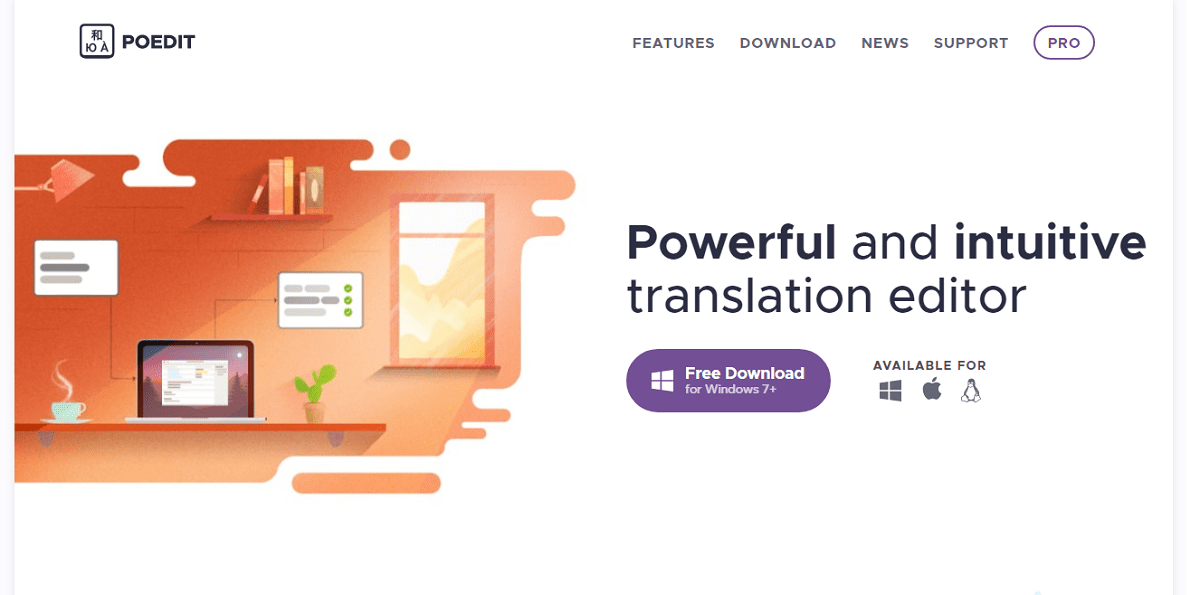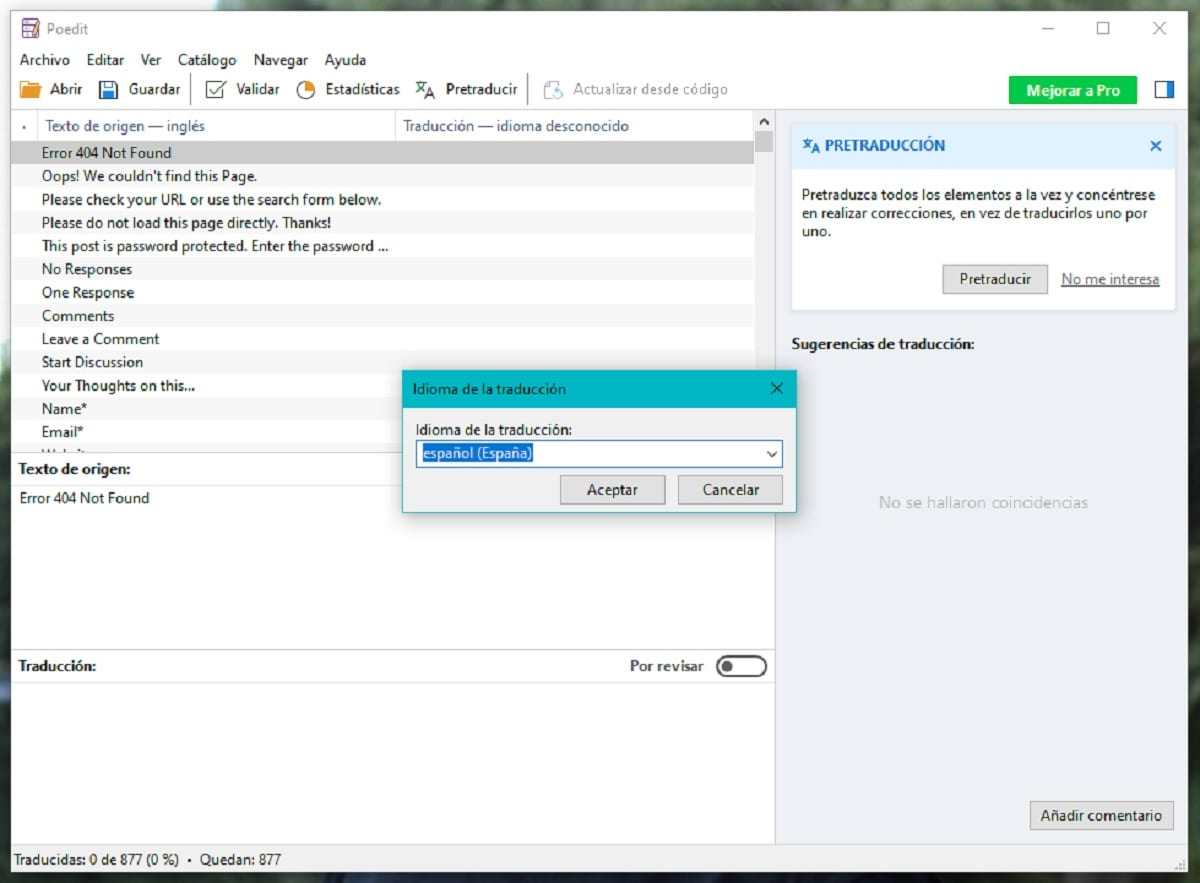
If you have a website or blog based on WordPress technology, you may have noticed that when installing a new theme or plugin that is not too popular, it may only be available in a specific language, usually English. . Perhaps this is not a problem for you within the administration area, but the fact is that if then the texts are shown in a different language than the website, then maybe you may be in trouble.
However, you should not worry about it, since they most likely have a translation file to change their language, so We are going to show you how you can translate it step by step from your Windows computer using the free Poedit tool.
How to translate WordPress themes and plugins from Windows using Poedit step by step
Download and install Poedit
First of all, to start with the translations, you must download the latest version of this program from your computer. This is free, although there is a paid version, and all you have to do is go to the official website of Poedit and click on the download button for Windows, in such a way that your download will begin. The subsequent installation is also quite simple and you shouldn't need help with it.

Locate the translation files in your WordPress
Translation files they are usually in format .POT o .PO in WordPress, whereas if there is already a translation created, it is usually saved in the .MO, or, at least, that is how it is established by default (note that there may also be modifications). Taking this into account, you will need to get a file in one of the first two formats to start creating the translation from scratch, or one in format .MO if you want to edit an existing translation.

For this, the ideal is that you connect using an FTP client or through the file manager of your web host, so that you can access the files on your website. Later, you must go to the directory where your theme is located (by default it will be /wp-content/themes/nombredeltema/) or your plugin (which by default will be /wp-content/plugins/nombredelplugin/). Once there, in principle you should find a folder called languages, lang o langs, and it will be there where you will find the translation files.
To be able to work easily using Poedit, you will have to download the one you want to edit on your Windows computer. The ideal way to start translating from scratch is that use the file in format .POT, which will usually have the same name as your theme or plugin.
Translate your WordPress theme or plugin using Poedit
Once the files are downloaded, you must open Poedit and, in the main window, click on the button "Create new translation", which will automatically ask you to choose a file in format .POT to get started. Then, the program will ask you for the language for which you are going to create the translation, and it is essential that you select exactly the same one that you have applied to your WordPress so that it can work including the region.


Then All the texts that your theme or plugin allows you to translate will appear in the window, where you must choose those that you find annoying or all those that you want to convert to Spanish and write the translation that you prefer. You can take the time you want and edit them again in the future if you require it.
Save and apply the translations created to WordPress
Once you are done, you should click on the "File" button at the top and then choose "Save as ..." in the context menu. Then choose a route within your team and wait a few moments. Automatically the program should save two different files, one in format .PO and another .MO. It is very important that you do not change their name or their extension, otherwise it will not work.

Afterwards, you will have to go back to the initial languages folder of your theme or plugin, and then upload both files using FTP or your site's file manager so that WordPress can detect them and use them on your website. Then if you reload any of the pages in which the theme or plugin is present, it should already be shown correctly translated.